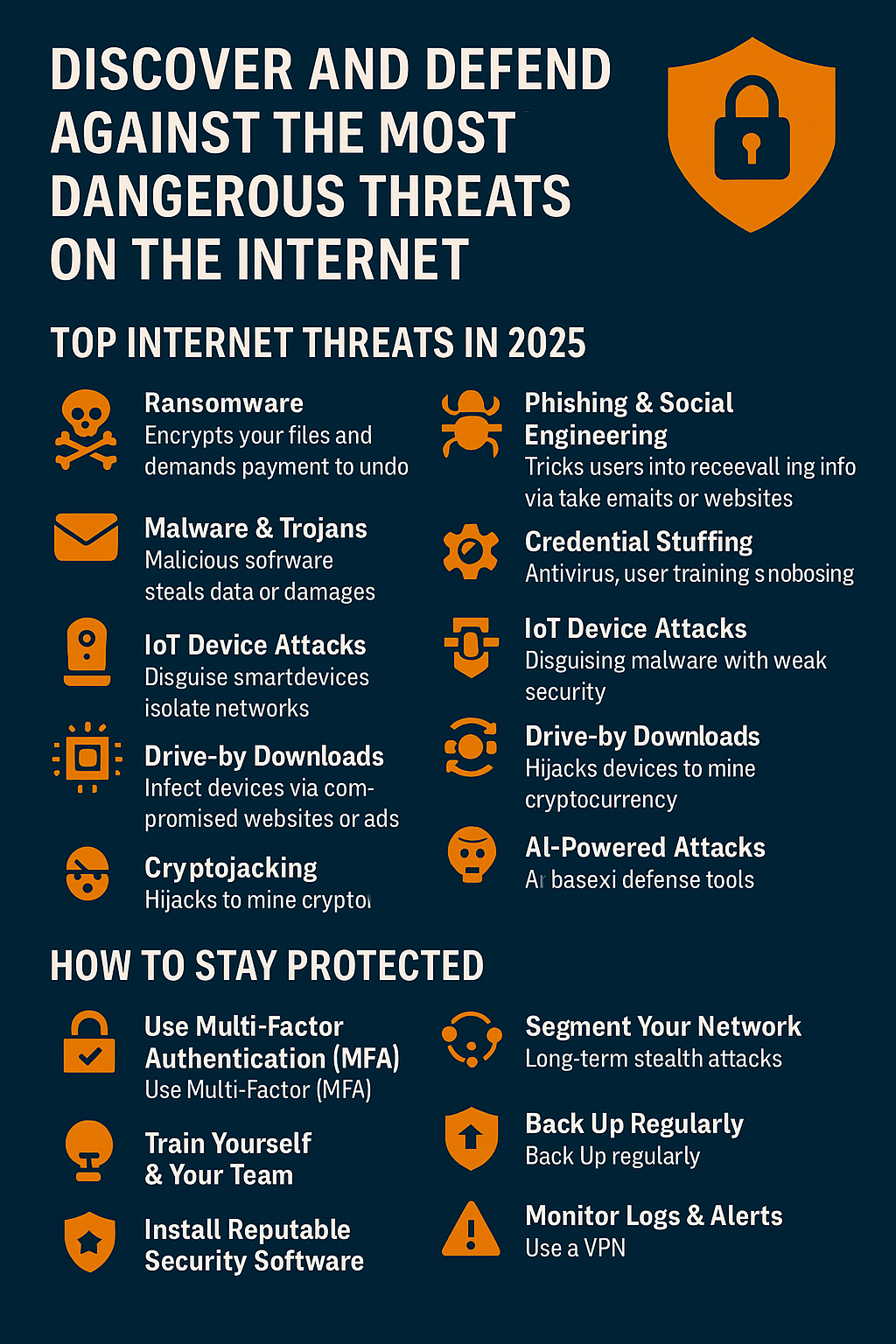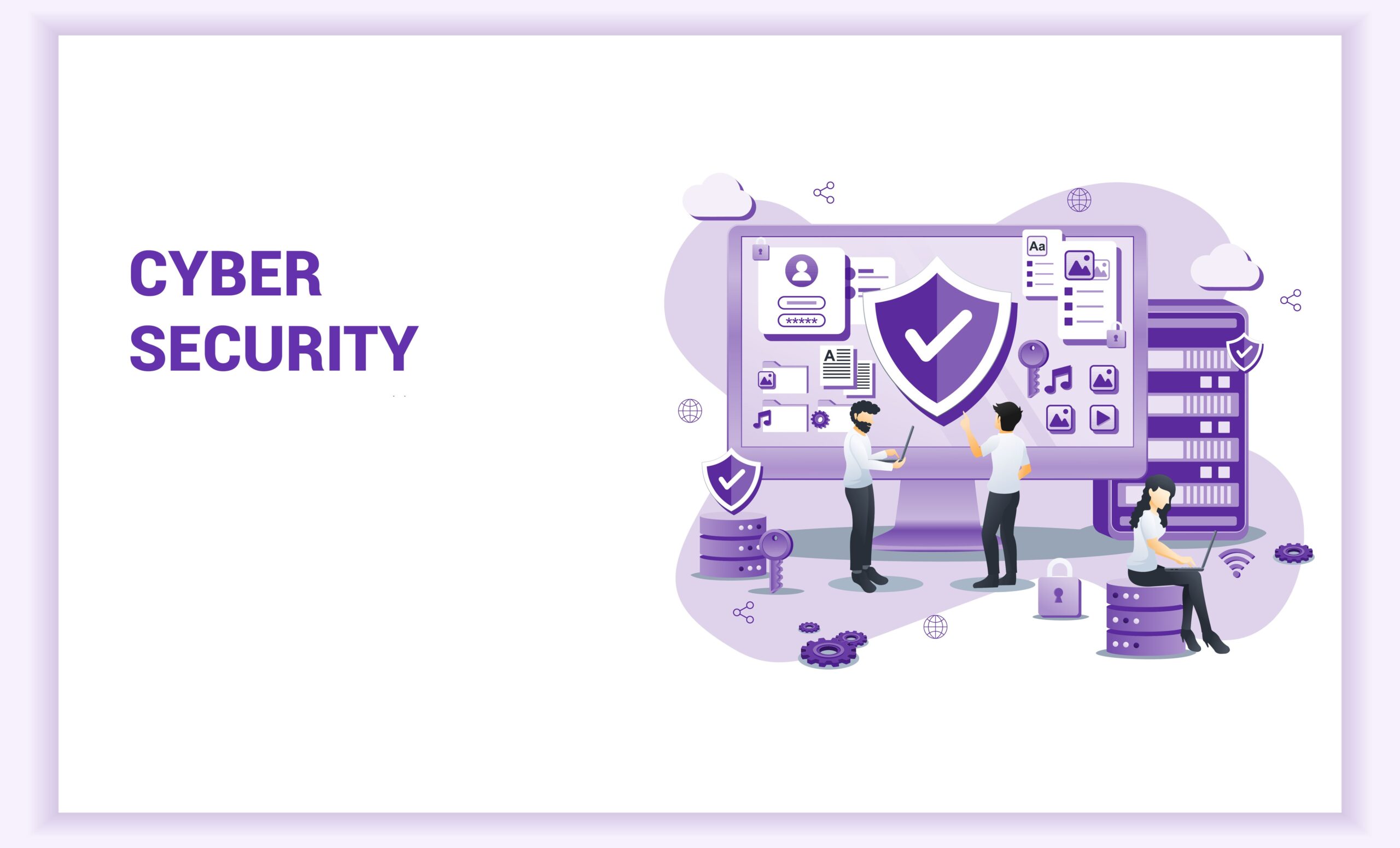
Top Internet Threats in 2025
Here are the most dangerous cyber threats currently wreaking havoc:
| Threat Type | Description | Defense Strategy |
| Ransomware | Encrypts your files and demands payment to unlock them | Offline backups, EDR tools, network segmentation |
| Phishing & Social Engineering | Tricks users into revealing sensitive info via fake emails or websites | Email filters, user training, MFA |
| Malware & Trojans | Malicious software that steals data or damages systems | Antivirus, software updates, sandboxing |
| Credential Stuffing | Uses stolen login credentials from other breaches | MFA, password managers, breach monitoring |
| IoT Device Attacks | Exploits smart devices with weak security | Change default passwords, isolate networks |
| Fake Updates & Rogue Software | Disguises malware as system updates or antivirus tools | Verify sources, use trusted vendors |
| Drive-by Downloads | Infects devices via compromised websites or ads | Ad blockers, browser hardening |
| Cryptojacking | Hijacks your device to mine cryptocurrency | Monitor CPU usage, block suspicious scripts |
| Advanced Persistent Threats (APTs) | Long-term stealth attacks targeting sensitive data | Threat detection systems, SIEM tools |
| AI-Powered Attacks | Uses machine learning to bypass defenses and automate phishing | AI-based defense tools, behavioral analysis |
How to Stay Protected
Here’s your digital armor checklist:
- Use Multi-Factor Authentication (MFA) — even if passwords are stolen, MFA blocks access.
- Train Yourself & Your Team — awareness is your first line of defense.
- Install Reputable Security Software — antivirus, firewalls, and endpoint protection.
- Keep Everything Updated — outdated software is a hacker’s playground.
- Segment Your Network — isolate critical systems to limit damage.
- Back Up Regularly — especially offline backups to recover from ransomware.
- Monitor Logs & Alerts — use SIEM tools to detect anomalies early.
- Use a VPN — encrypt your traffic, especially on public networks.


No responses yet